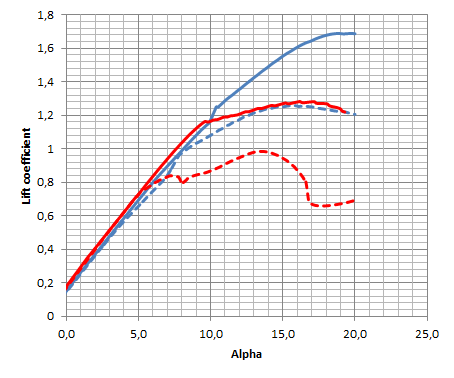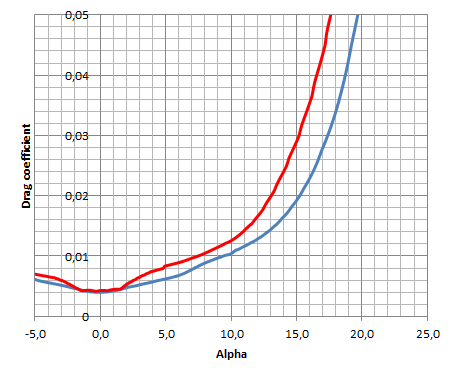Performance & Sustainability
State-of-the-art aerodynamics
The charts below are depicting a direct comparison between the Beast Horus airfoil (blue) and the NACA 64 series profile (red) used in all competitor aircraft, at a Reynolds number of 5M. In order to show something better resembling the conditions at stall speed, there is also a dashed curve for Reynolds 500k.

It can be clearly seen, that there is a more than 26% advantage in lift for cruise condition (at the same drag), which is responsible for the tremendous gain in efficiency compared to other similar aircraft.
For landing conditions, the increased lift is also complemented by the lack of the abrupt stall, resulting in a very gentle and predictable stalling behavior.

Laminar wing profiles have been en vogue for performance aircraft for many years already, resulting in a lot of drawbacks, such as unpredictable stalls and heavily decreased performance in rain condition.
The drag profile clearly shows, that improvements are still possible when not focusing solely on top speed.
Using our next-gen airfoils reduces drag and consumption over the whole speed range.
Weight advantages
Modern composites are offering a lot of advantages. Substituting a common 0.6mm aluminium sheet by a 6mm carbon sandwich, can provide lots of additional stiffness, while actually reducing the weight. Using this approach, we are able to lower the weight of the aircraft by 70kg, or 15% in overall take-off weight.
This weight savings contribute directly proportional in saved fuel.
Sustainability
Achieving climate neutrality in aviation is a major challenge. While incorporating many technologies which improve efficiency by a significant amount, it is not possible yet to completely transition away from fossil fuels. The modular construction and ballistic rescue system make this aircraft the ideal testbed for evaluation of multiple future key technologies, such as sustainable aviation fuels.
